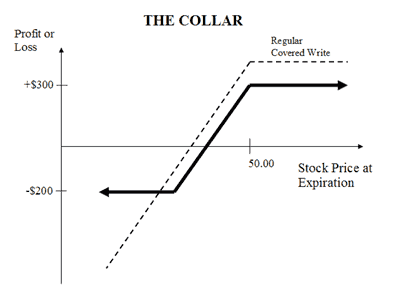
A collar option spread is another example of a spread that you won’t see a signal coming out of either of our options rooms. Not because it is too risky or a bad idea, but it necessitates holding an underlying stock position. But it’s important to know what it is and you may get to use it in the management of your portfolio.
A collar is an options trading strategy that is constructed by holding shares of the underlying stock while simultaneously buying protective puts and selling call options against that stock holding. The puts and the calls are both out-of-the-money options having the same expiration month and must be equal in the number of contracts.
There are at least a couple of reasons why one would put on a trade like this.
The collar is a good strategy to use if the options trader is writing covered calls to earn premiums but wishes to protect himself from an unexpectedly sharp drop in the price of the underlying security.
Or perhaps the owner of the stock is in a “lock-out” period meaning that the owner is prohibited from selling out the stock until some predetermined date and wants to protect themselves from loss.
Here is what the profit and loss graph looks like for a collar spread:




